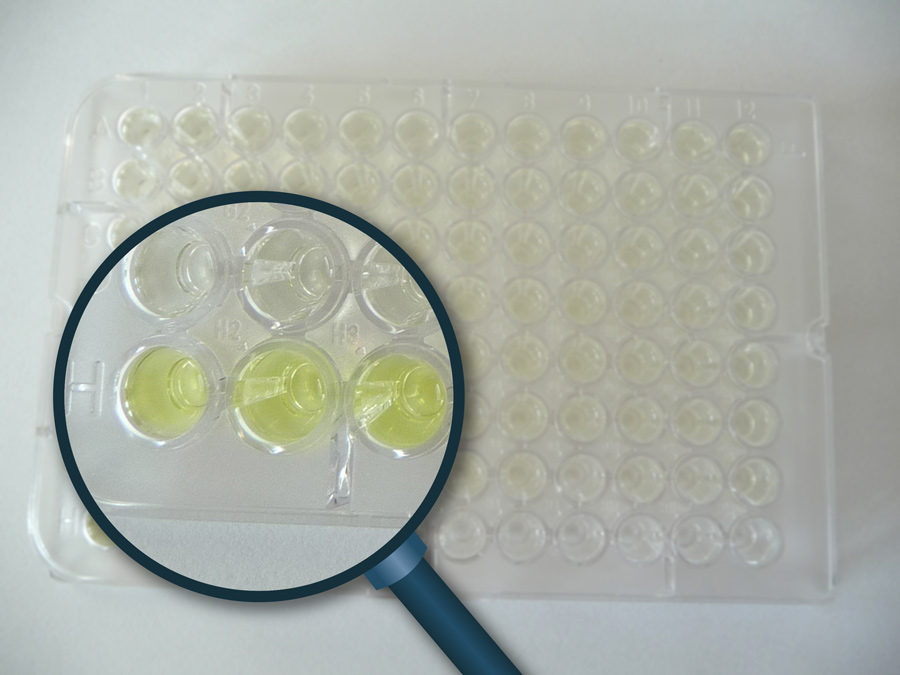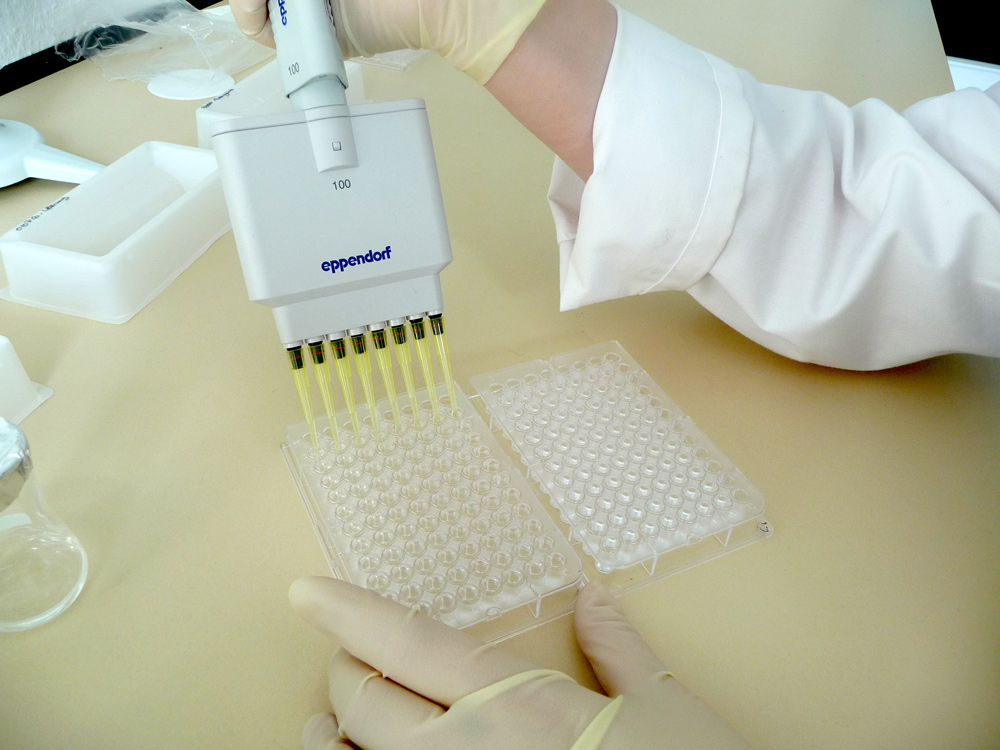The umuC test in accordance with the DIN EN ISO 38415-T3 1996-12 norm evaluates the mutagenic potential of samples in solution.
The test organism is the genetically modified bacterium strain Salmonella typhimurium TA 1535/pSK 1002, a gram-negative facultative anaerobe of the Enterobacteriaceae family. This strain presents important characteristics for a sensitive genotoxicity test:
- the genome is modified, so that the excision repair system is deficient (uvrB) and the cell wall is incomplete (rfa) so that it is permeable to several substances. Moreover, the strain does not possess a chromosomal lacZ gene;
- the strain also carries the plasmid pSK1002, which contains a fused umuC-lacZ gene and a gene for Ampicillin resistance.
The bacteria are exposed under specific conditions to different concentrations of the test substance, whereat genotoxic substances induce the umuC gene in a concentration-dependent manner. The induction of the gene is a measure for the mutagenic potential of the tested substance, and since the umuC gene is fused to the ß-galactosidase gene (lacZ), the induction rate of the umuC gene can be determined through measurement of the galactosidase activity.
The umuC test is employed for the assessment of genotoxic potential in the frame of sewage effluent monitoring.


